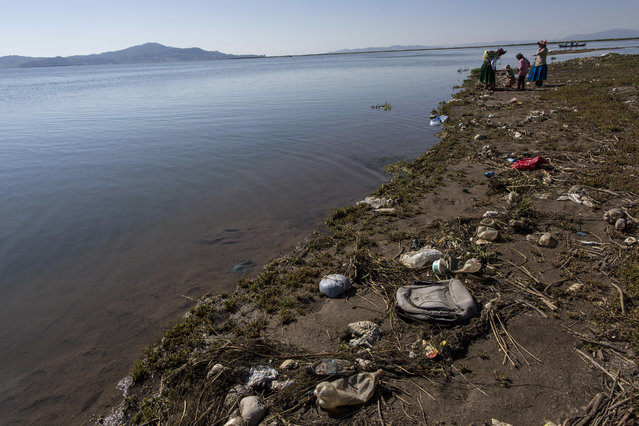
In this February 3, 2017 photo, trash covers the shores of Lake Titicaca where environmental activist Maruja Inquilla talks to locals in Coata, in the Puno region of Peru. Inquillla is alerting neighboring villagers of the dangers lurking in their food and water. “If the frogs could talk they would say, This is killing me”, she said. (Photo by Rodrigo Abd/AP Photo)
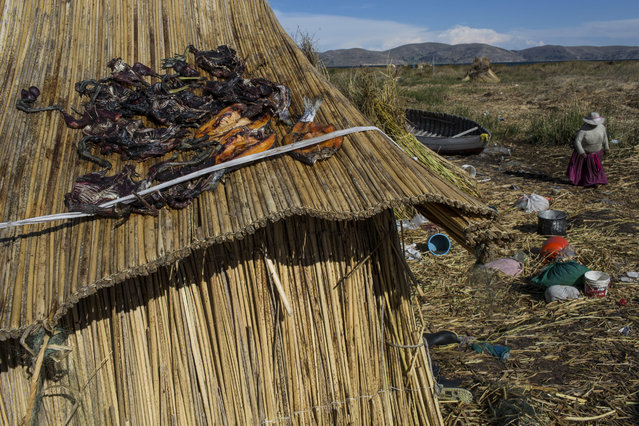
In this February 4, 2017 photo, trapped birds and caught trout lay out to dry on the thatched roof of a home in Kapi Cruz Grande, a village on the shore of Lake Titicaca in the Puno region of Peru. A government-sponsored study conducted in 2014 found mercury, cadmium, zinc and copper in four types of fish that form part of local population's diet at levels higher than those advised for human consumption. (Photo by Rodrigo Abd/AP Photo)
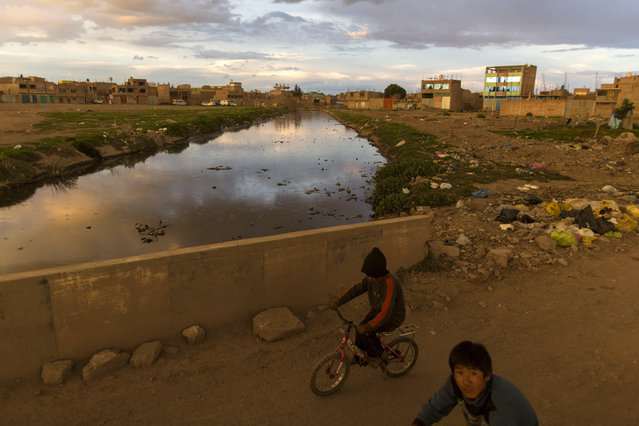
In this February 1, 2017 photo, children ride bikes along the Torococha River near a municipal waste treatment plant with water that flows into Lake Titicaca, in Juliaca, in the Puno region of Peru. Many of the more than 400,000 tourists who visit Lake Titicaca from Peru each year stop first in Juliaca, a town that produces 200 tons of trash daily, much of it winding up in a river that has turned into a conveyor belt of waste heading into the lake. (Photo by Rodrigo Abd/AP Photo)
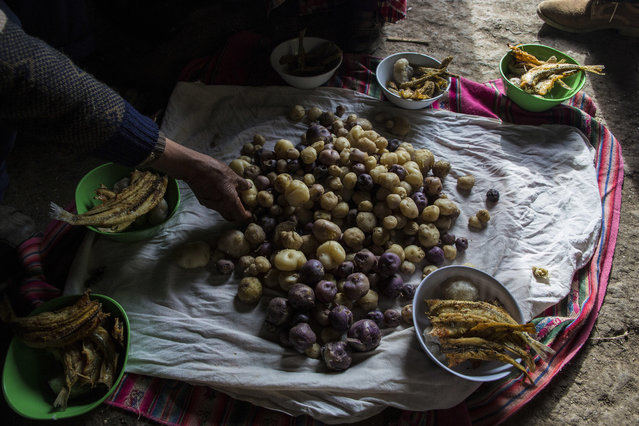
In this February3, 2017 photo, the Avila family sets their lunch of potatoes and fish on the floor of their home in Coata, a small village on the shore of Lake Titicaca, in the Puno region of Peru. Maruja Inquilla, a local environmental activist, has been visiting villagers to alert them of the dangers lurking in their food and water, in connection with contamination in the Lake Titicaca. (Photo by Rodrigo Abd/AP Photo)
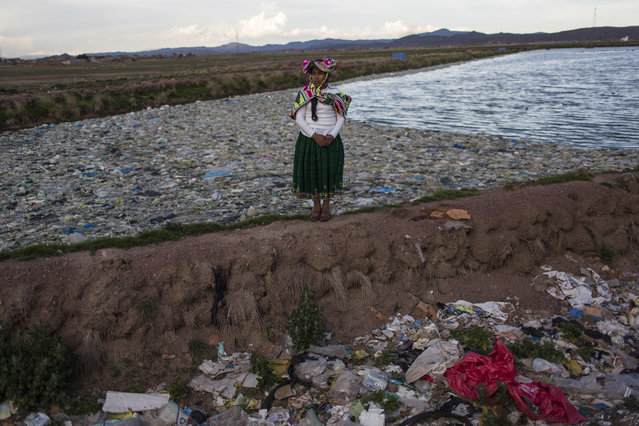
In this February 1, 2017 photo, environmental activist Maruja Inquilla poses for a photo next to a Municipal waste treatment plant with water that flows into Lake Titicaca, in Juliaca, in the Puno region of Peru. “If the frogs could talk they would say, This is killing me”," said Inquilla, who recently showed up at the Puno governor's house carrying plastic bags filled with hundreds of dead frogs in protest. (Photo by Rodrigo Abd/AP Photo)
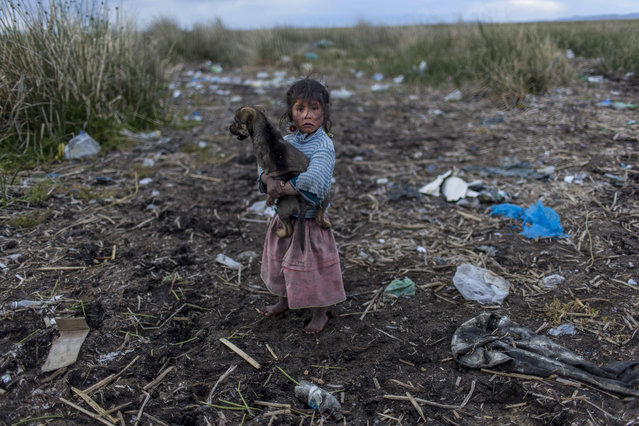
In this February 4, 2017 photo, Melinda Quispe walks on the trash strewn shore of Lake Titicaca, as she holds her dog, in her village Kapi Cruz Grande, in the Puno region of Peru. The governments of Peru and Bolivia signed a pact in January to spend more than $500 million to attack the pollution problem of Lake Titicaca, though the details were vague. (Photo by Rodrigo Abd/AP Photo)
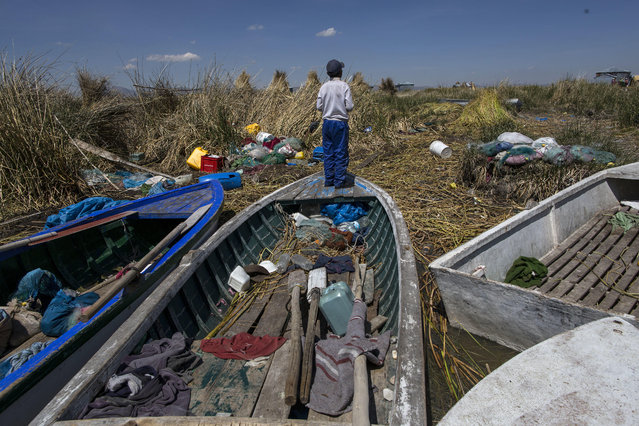
In this February 2, 2017 photo, a boy stands on a fishing boat on the littered shore of Lake Titicaca in Kapi Cruz Grande, in the Puno region of Peru. The camouflage-colored Titicaca water frogs that used to be in abundance have thinned in numbers and have been placed on a “critically endangered” list by the International Union for Conservation of Nature and just 10,000 remain. (Photo by Rodrigo Abd/AP Photo)
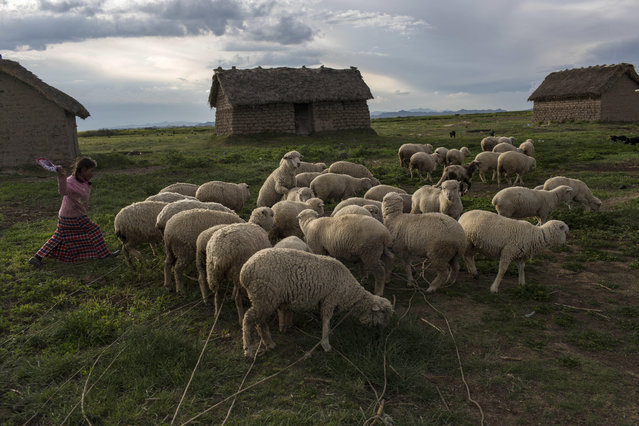
In this February 3, 2017 photo, Maria Avila moves her flock of sheep in Coata, a small village on the shores of Lake Titicaca in the Puno region of Peru. Avila, the mother of a 4-year-old living in an adobe house, says she cannot bathe or drink the lake's water without getting severe diarrhea or red spots on her skin. (Photo by Rodrigo Abd/AP Photo)
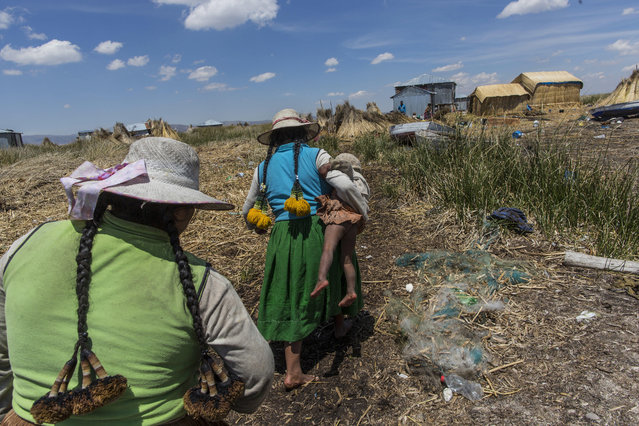
In this February 2, 2017 photo, a woman carries her baby home in Kapi Cruz Grande, a village on the trash filled shores of Lake Titicaca in the Puno region of Peru. Peru’s new president, Pedro Pablo Kuczynski, a former Wall Street banker who lived just 40 kilometers (25 miles) from the lake as a youth, has made access to clean water one of the priorities of his presidency. (Photo by Rodrigo Abd/AP Photo)
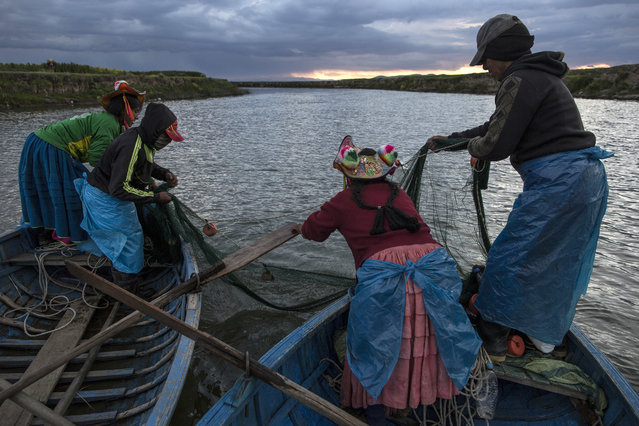
In this February 3, 2017 photo, the Avila family fishes on the Coata River, which flows into Lake Titicaca, in the Puno region of Peru. Untreated sewage water drains from two dozen nearby cities, and illegal gold mines high in the Andes dump up to 15 tons of mercury a year into the river leading to the lake. (Photo by Rodrigo Abd/AP Photo)
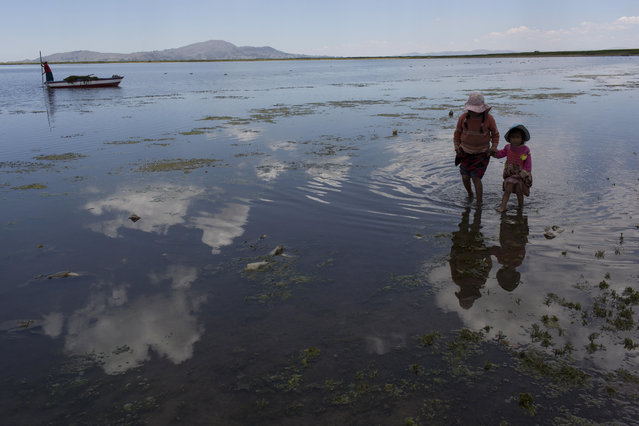
In this February 2, 2017 photo, cousins from the Avila family search for discarded toys on the shores of Lake Titicaca, in Coata in the Puno region of Peru. The shores of South America's largest lake are littered with dead frogs, discarded paint buckets and bags of soggy trash. Less visible threats lurk in the water itself: highly toxic levels of lead and mercury. (Photo by Rodrigo Abd/AP Photo)
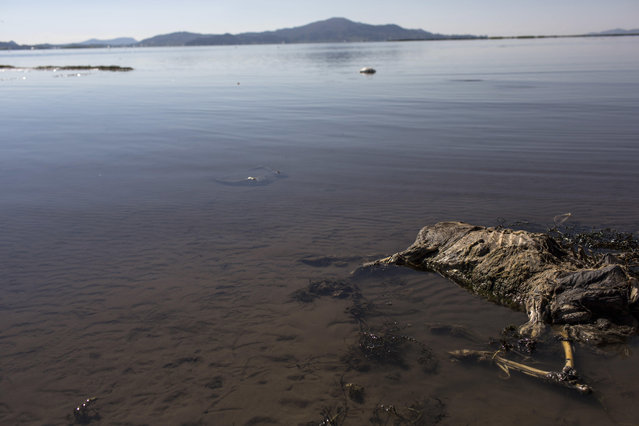
In this February 3, 2017 photo, a sheep's carcass lays on the shore of Lake Titicaca, Peru. According to environmental activists, villagers' cattle and crops are dying due to contamination. (Photo by Rodrigo Abd/AP Photo)
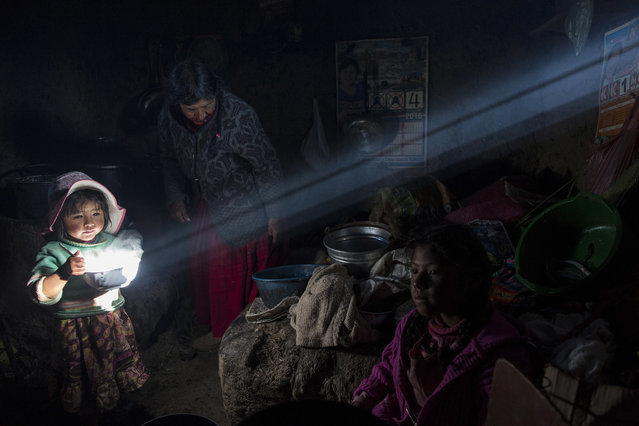
In this February 4, 2017 photo, a child holds a bowl of hot food as the Avila family has lunch at their home in Coata, a small village on the shore of Lake Titicaca in the Puno region of Peru. Lake Titicaca was once worshipped by Incas who proclaimed its deep blue waters the birthplace of the sun, but today high levels of mercury, cadmium, zinc and copper are found in the fish locals consume, according to a 2014 government study. (Photo by Rodrigo Abd/AP Photo)
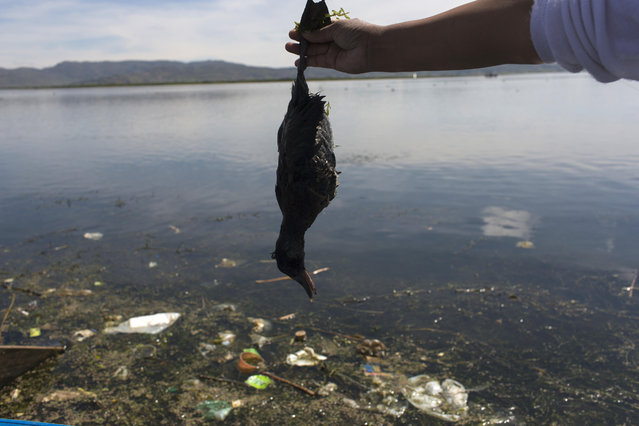
In this February 4, 2017 photo, environmental activist Maruja Inquilla holds a dead bird called a “Choca”, on the shore of Lake Titicaca, in Coata, in the Puno region of Peru. Untreated sewage water drains from two dozen nearby cities, and illegal gold mines high in the Andes dump up to 15 tons of mercury a year into a river leading to the lake. (Photo by Rodrigo Abd/AP Photo)
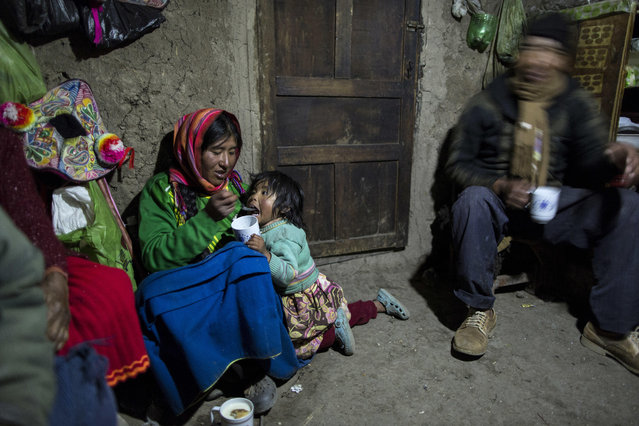
In this February 4, 2017 photo, Maria Avila feeds her daughter Shomara in their family's adobe home in Coata, a village on the shored of Lake Titicaca in the Puno region of Peru. Avila grew angry as she talked about the lake’s contamination. “My ancestors have lived here more than 500 years. They have never gone through these things”, she said. (Photo by Rodrigo Abd/AP Photo)
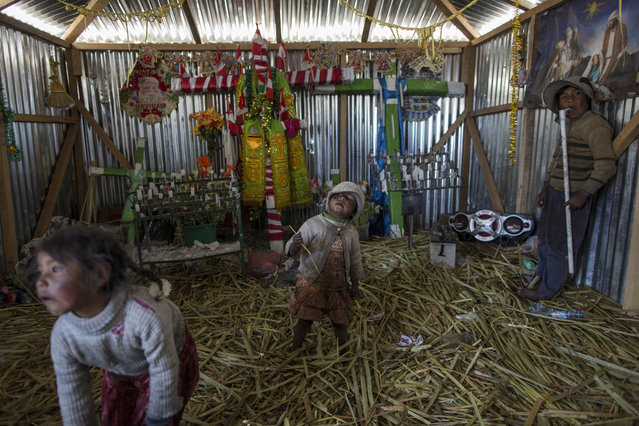
In this February 2, 2017 photo, children play inside a church in Kapi Cruz Grande, a community on the shores of Lake Titicaca in the Puno region of Peru. Many living on the 4,000-meter (13,100-feet) high plain surrounding the lake contaminated with toxic levels of lead and mercury feel government leaders have neglected them. (Photo by Rodrigo Abd/AP Photo)
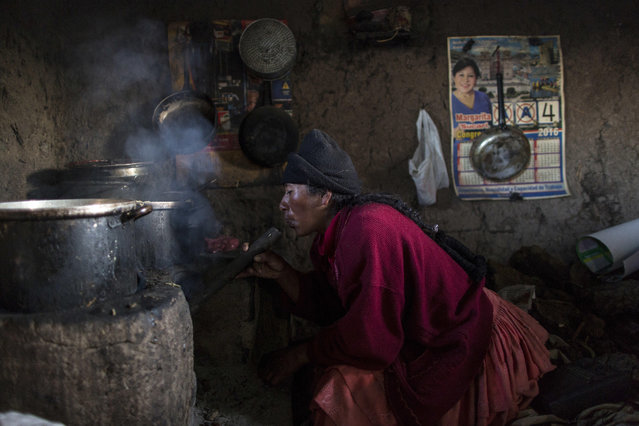
In this February 4, 2017 photo, Lilian Avila Diaz lights her firewood stove to cook lunch for her family in Coata, a small village on the shore of Lake Titicaca, in the Puno region of Peru. The amount of mercury consumed by Titicaca residents is “unacceptable”, according to Dr. Jane M. Hightower, who specializes in internal medicine at the California Pacific Medical Center in San Francisco and author of the book “Diagnosis: Mercury: Money, Politics & Poison”, after reviewing a 2014 study on fish caught from Lake Titicaca. (Photo by Rodrigo Abd/AP Photo)
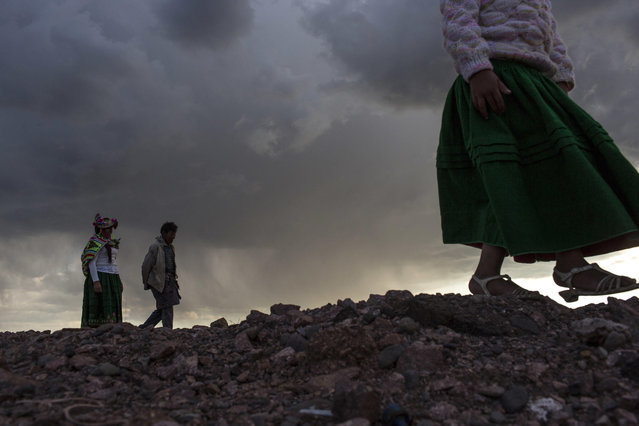
In this February 1, 2017 photo, environmental activist Maruja Inquilla, left, walks with Auroro Belisario Pacompia at a municipal waste treatment plant whose waters flow into Lake Titicaca, in Juliaca, in the Puno region of Peru. Inquillla is alerting neighboring villagers of the dangers lurking in their food and water. (Photo by Rodrigo Abd/AP Photo)
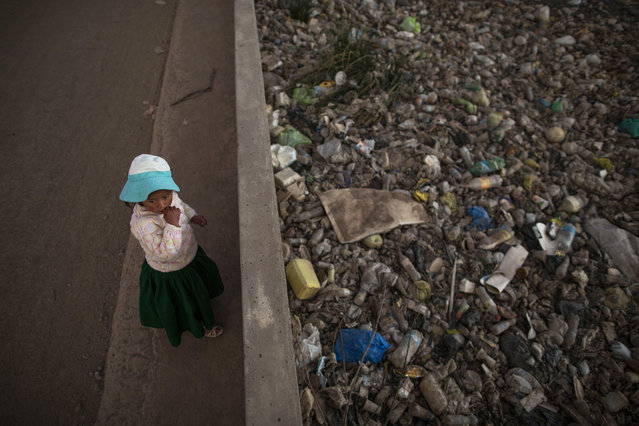
In this February 1, 2017 photo, Maria Jose Campos Inquilla stands next to the trash-filled Torococha River near a municipal waste treatment plant that feeds into Lake Titicaca, in Juliaca, in the Puno region of Peru. In 2011, then-presidential candidate Ollanta Humala promised to resolve the contamination and construct water sewage processing plants. He won 79 percent of votes in the Lake Titicaca region but did not follow through. (Photo by Rodrigo Abd/AP Photo)
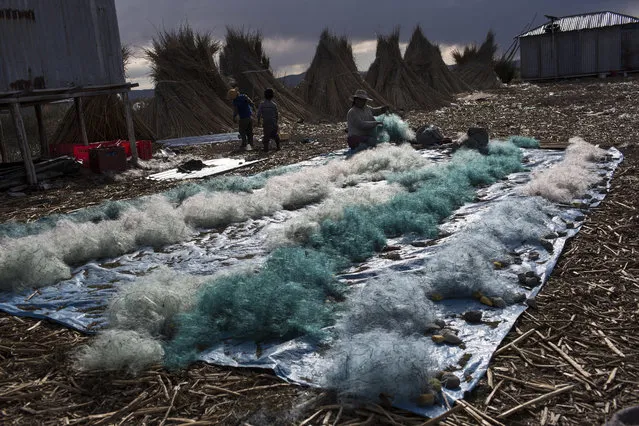
In this February 4, 2017 photo, Naty Lugano Quispe cleans fish nets in Kapi Cruz Grande, a village on the shore of Lake Titicaca, in the Puno region of Peru. A 2014 study suggested officials limit some fish consumption, but area inhabitants said they weren’t informed about the study or told they could be consuming fish containing mercury, cadmium, zinc and copper at levels higher than those advised for human consumption. (Photo by Rodrigo Abd/AP Photo)
04 Mar 2017 00:02:00,
post received
0 comments
